Market
Documenta Presents an Invigorating Alternative to a Market-Driven Art World. Maybe That’s Why the Industry’s Establishment Has Largely Dismissed It
Scandal aside, I was surprised by the intolerance shown by the art market establishment.
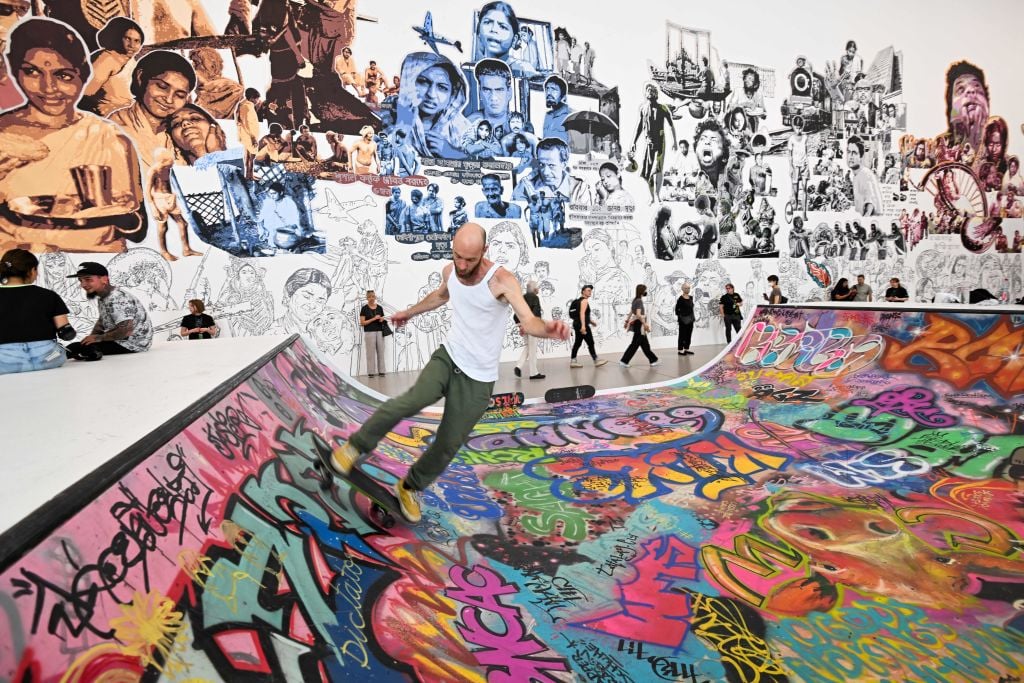
Scandal aside, I was surprised by the intolerance shown by the art market establishment.

Kate Brown

At dinner a few weeks ago in Kassel, most of us in town for the preview of Documenta 15 dined at the same restaurant. At least, it felt that way. Despite the massive size of the exhibition, the venues seemed considerably sparser than at the Venice Biennale’s VIP preview some weeks before. As we sat eating pizza and sipping spritzes, we were unaware of the scandal that would ignite just a few days later, when it came to public attention that blatantly antisemitic characters appeared in a work by one of the show’s artist collectives.
And so, we ate. We took the show in. Jumping from city to city has never posed much of a problem for art-world professionals. And yet, it seemed like there was a smaller cohort in Kassel than one might expect, especially considering it is just a four-hour train from Art Basel, which had just opened. While I toured this vast and dynamic exhibition, my social media was dominated by glossier dispatches from Basel, Hydra, and Menorca.
“I cannot believe more museum people are not here,” one German museum director, who’d just come from Basel, told me. Most people on the Rhine told the director they were not “bothering” with this year’s exhibition, one of the most prestigious in the world.
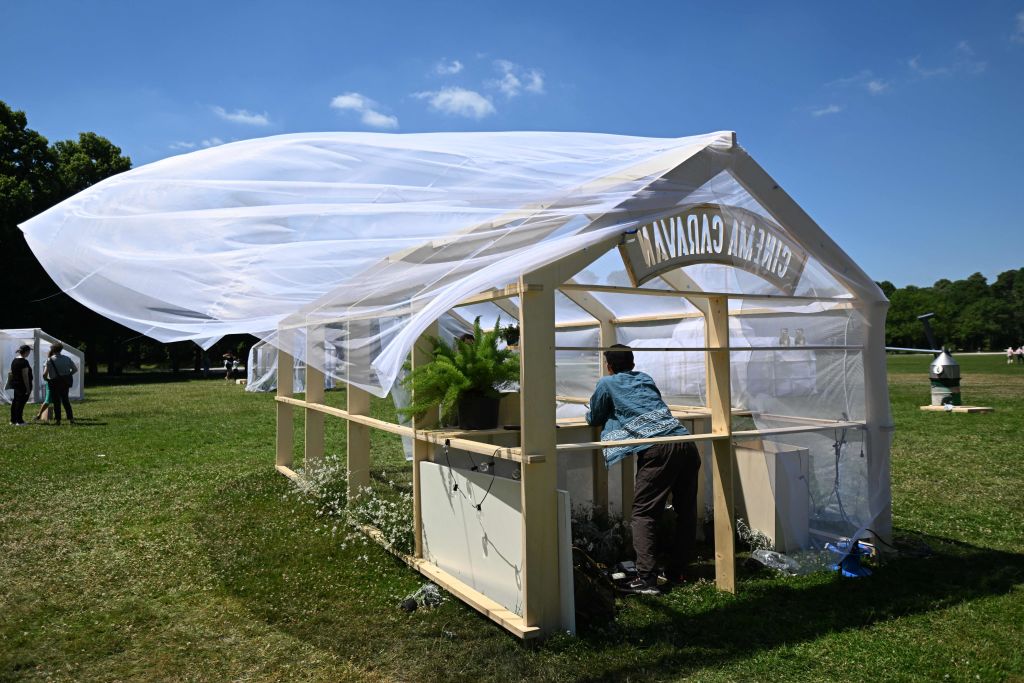
The multimedia installation ‘Cinema Caravan’ by Takashi Kuribayashi from Japan is pictured in the park in front of the Orangerie, one of the venues of the documenta fifteen contemporary art exhibition, in Kassel, central Germany. Photo by Ina Fassbender/AFP via Getty Images.
Why weren’t more people here? Since January, the majority of coverage running up to Documenta 15 focused on allegations of antisemitism directed at a few participants, causing concern in a nation with a particular responsibility toward Jewish communities and considerably dampening enthusiasm.
Yet I can think of another reason, too: There is no traditional art business to be done here. The largest and most ambitious edition of Documenta ever had barely registered on the art-market sonar.
I was surprised by how often critics, curators, and collectors repeated the same critique over the last weeks with a sigh: There isn’t any art at this show. (It was a sharper dismissal than what some said of Cecilia Alemani’s Venice exhibition, which included many female creators, like Josephine Baker, who do not fit neatly into the classical understanding of the term “artist.”)
To say, again and again, that there is no art strikes me as a surprising comment for an exhibition that features contributions from more than 1,500 people who understand themselves, in most instances, to be artists. Indonesian collective Ruangrupa carefully concocted a decentralized curatorial concept, inviting 50 collectives from around the world to take part; each collective invited further participants. Curatorial autonomy was broken, like bread, into small bits to share around.
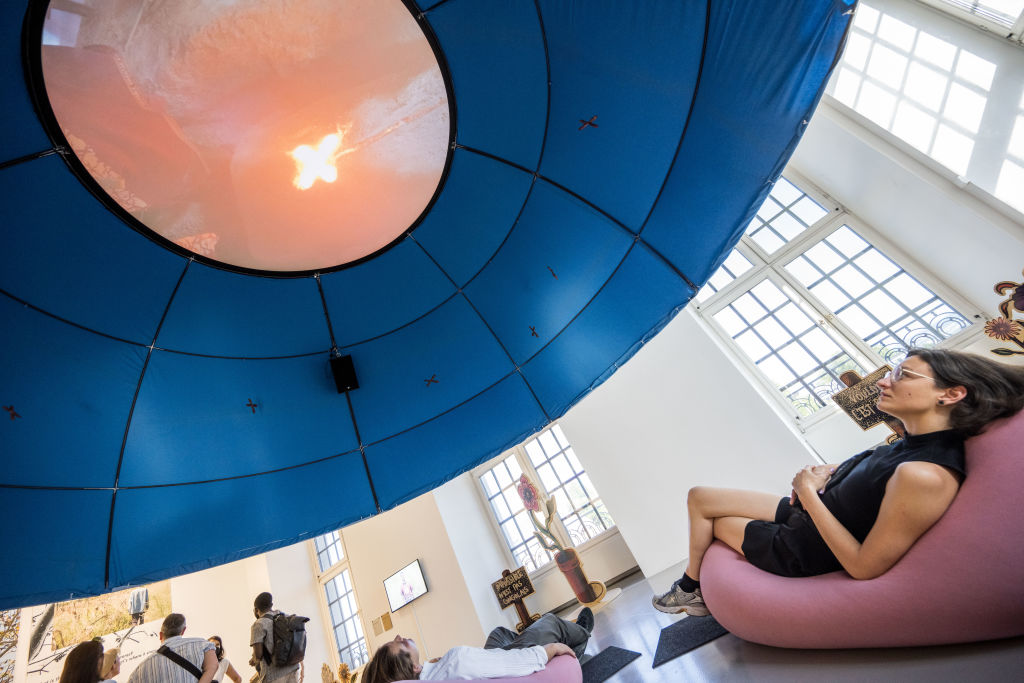
Visitors watch the video installation Walemba – The story of the wanzo wa Mikub’ of the ‘Centre d’Art Waza at the Fridericianum during the first preview day at the documenta 15 modern art fair on June 15, 2022 in Kassel, Germany. Photo: Thomas Lohnes/Getty Images.
This decentralized modus operandi has proven to be a harmful accountability vacuum when it came to offensive antisemitic portrayals of Jews by one of the most prominently featured collectives, Taring Padi. There is valid outrage directed at Documenta, its curators, and some its participants, who—to use the favorite term—collectively failed on this front.
Yet, beyond this, I also noticed a quietly simmering intolerance for Ruangrupa’s repudiation of star-spangled artist lists. Philipp Meier’s review of the show in Neuer Zuricher Zeitung put it bluntly: Headlined “an art exhibition without artists,” Meier writes that the “platforms, archives, workshops, agencies and publishers, activists, queer groups, and women’s organizations” on view in Kassel are not artists. He was far from the only person I heard say this.
What makes a “real” artist? For many of the collectives invited to Documenta this year, making a living selling art is not an easy or particularly urgent task. Their practices are wound up in creative living and community building, rather than producing collectible objects.
What does this kind of expression look like? One successful example is the Wajukuu Art Project, a community-based group in Nairobi’s Mukuru slum, on view at the Documenta Halle. Its members help keep children off the street by generating employment opportunities through art production and sales.

A visitor looks at a work by Wajukuu Art Project from Nairobi at the documenta Halle, one of the venues of the documenta fifteen contemporary art exhibition, in Kassel, central Germany. Photo: Anton Roland Laub/AFP via Getty Images.
At Documenta Halle, their installation is entirely covered with rippled metal and includes soundscapes from the neighborhood and dreamy figurative paintings by collective member Ngugi Waweru. Recreating the ambiance of Mukuru heightens the poignancy of the entire collective’s work. Nearby, a skate ramp and an active, open-for-all printing press transformed an otherwise stiff gallery into an avant-garde clubhouse.
The message of this exhibition was clear: Art must be more than surplus value and object creation. Ruangrupa’s show proved this in droves—art can be a lifeline, a memory keeper, a place for fun in times of trauma, and a glue for society. Underneath the good vibes was a rigorously principled exhibition that did not succeed from all angles, but, in many ways, managed to puncture our current penchant for climate-controlled, speculative, and product-driven art. So why did so many seem to not have any time for it?
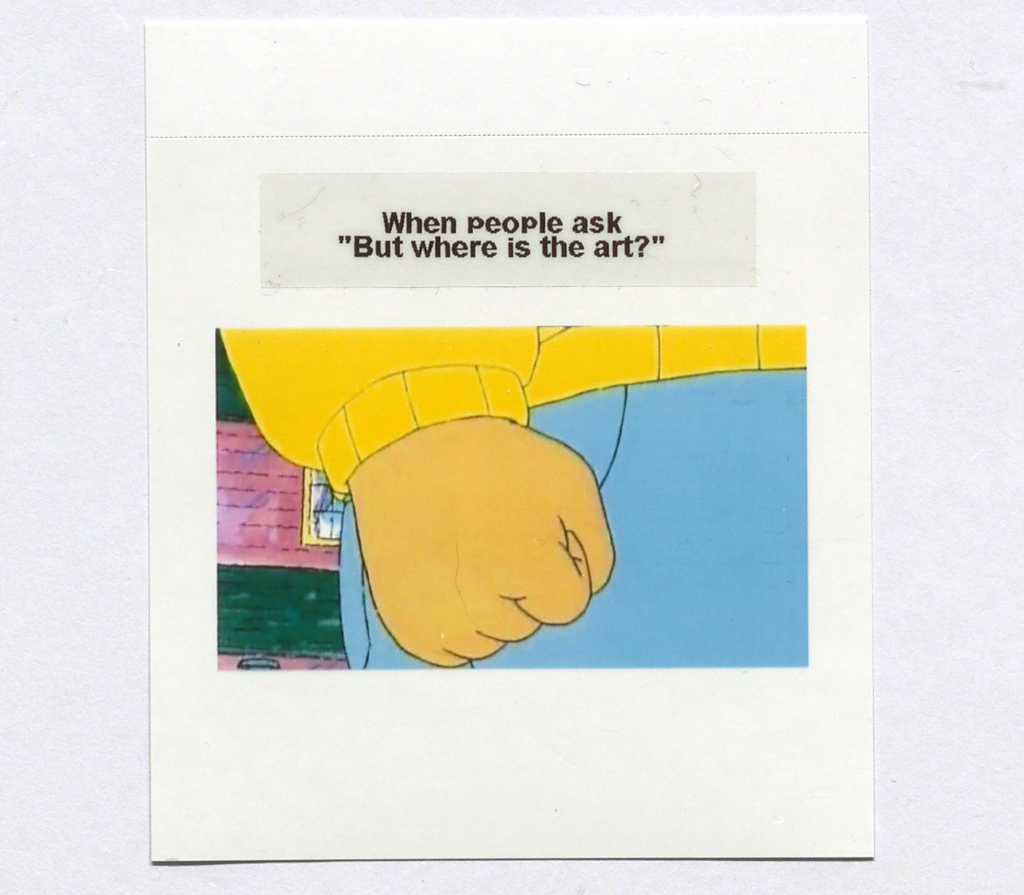
A postered version appeared around Kassel of a meme created by Cem A. artist and curatorial assistant for Documenta 15. Courtesy of Cem A. aka @freeze_magazine. Design in collaboration with Malte J. Richter.
One table over from us at that restaurant, Paris-based dealers Alex Mor and Philippe Charpentier were hosting a dinner for the Beiruti filmmaker Marwa Arsanios. Whereas Venice is an endless buffet of gallery dinners and parties, here, there were only maybe a couple. (Miraculously, I did not hear from a single public relations firm the entire week.)
Arsanios is one of a small handful of artists in the show with any Western notion of an art market. (There were also German artists Hito Steyerl and Henrike Naumann, but they were invited by individual collectives, not by the curators Ruangrupa themselves.) “The massive contrast between Venice and Documenta wasn’t an accident,” an exhibiting artist told me.
A completist viewing of this show is impossible. Multiple artists’ works are presented as holistic installations with not a floor plan in sight. Wall labels, which were strikingly hard to find, left you to guess which work belonged to whom.
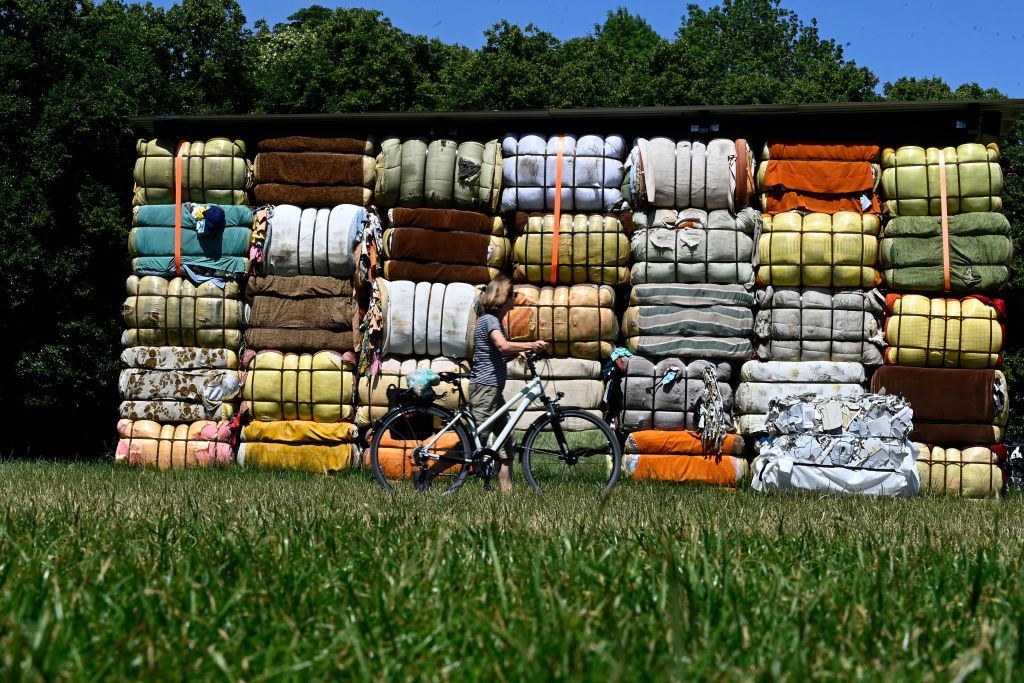
The multimedia installation by The Nest Collective from Kenya resembles a dumpsite in the park in front of the Orangerie. Photo: Ina Fassbender/AFP via Getty Images.
A New York critic shouted over karaoke music that “nothing was ready” during the preview, a fact that didn’t seem to be the slightest concern for the artists in the show. “Documenta is worried about day one but we’re not worried about that,” an artist from the Trinidad collective Alice Yard told me. The collective will show various works throughout the show as they are made. Another group, Britto Arts Trust, set up a Bengali kitchen garden that will present the food of 100 nationalities over 100 days—the running time of Documenta. So far, everything is still a seedling.
To be sure, this pace is not designed for mile-a-minute press previews. But there is a long history of relational art and aesthetics that Westerners should be familiar with: commercial dinners-as-art organized by Rirkrit Tiravanija at Gavin Brown; living-rooms-as-art created by blue-chip artist Andrea Zittel. So, perhaps what is different here—and what may, unconsciously or not, be driving some of the dismissal I noticed—is that most of these artists are from the Global South.
The conceptual underpinning of the show is the word lumbung, which means a communal rice-barn in Indonesian. In the world of this show, any surplus is distributed among the group. That means that more is more, and more is shared. But abundance doesn’t lend itself to the scarcity-obsessed art market.
Recently, art critics have written about the market’s overshadowing of discourse. “At the biennials, in the magazines, in the M.F.A. programs, the tone right now is stubbornly backward-looking, capable of little beyond auto-critique and enduring a bona fide crisis of confidence,” Jason Farago wrote in the New York Times.
Even still, while the biennial world operates outside of the art market in many ways, the two are actually a lot more intertwined than many care to admit. Dealers often end up footing the bill for work in these supposedly un-commercial events—in large part because they believe it will pay off down the line.

Visitors walk through the rotunda at the Fridericianum during the first preview day at the documenta 15. Photo: Thomas Lohnes/Getty Images.
Is the Documenta difference the fact it is well funded by the government, to the tune of €43 million? In a usual year, not really. When writing about Documenta 13, Jerry Saltz noted that while curator Carolyn Christov-Bakargiev claimed to have “gone outside the market,” more than a third of the artists on view were represented by Marian Goodman Gallery. “If you’re going to turn the page, then turn the page,” Saltz scolded.
What is so novel is that Documenta 15 does just that. After dinner, several of us attended an outdoor party hosted by the Indonesian platform Gudskul, a collective of collectives holed up on the backlot of the Fridericianum Museum. Their encampment is an open-concept kitchen by day and a karaoke bar by night.
Lumbung was everywhere and, by and large, a totally contagious feeling. It emanated from both energetic live events and carpeted rooms with bean bag chairs where some viewers felt comfortable enough to take a nap.
Despite Documenta’s thoughtful repudiation of the Western art market, a few engaged collectors came anyway. Two curators working for private collectors assured me they were going to tell their patrons to come to the show at some point. Alain Servais and Uli Sigg were in town, and mega-collector Qiao Zhibing planned to go after visiting Art Basel.
And while there may not be the same volume of traditionally appealing artworks co-produced with mega galleries, Ruangrupa has created the online Lumbung Gallery, an alternative economic model that allows collectors of all stripes to engage with the work presented there.
The curators recruited Beat Raeber and Martin Heller, co-founders of The Artists, a platform launched last year for artists who do not have gallery representation. Five percent of all The Artists’ sales go into a pot that gets distributed among all the platform’s participants. The Artists is part of a wider trend in some corners of the art industry to move towards something more like mutually beneficial partnership—very lumbung.
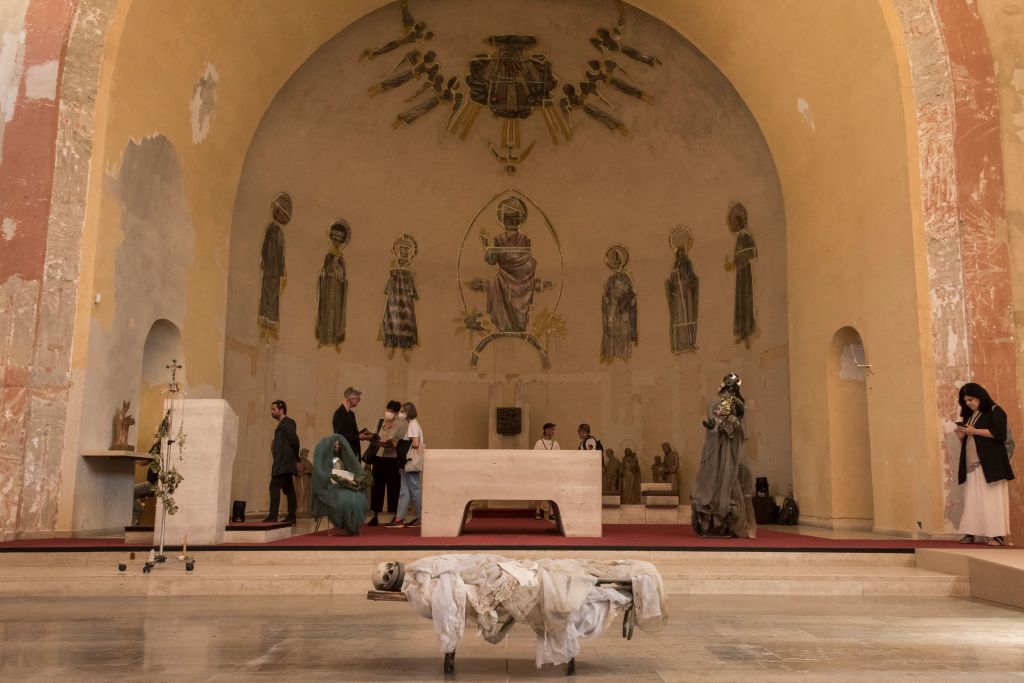
Atis Rezistans / Ghetto Biennale from Haiti at the Saint Kunigundis Church, one of the venues of the documenta fifteen. Photo by Anton Roland Laub/AFP via Getty Images.
The Artists, working together with Ruangrupa, have found a way to adjust this model to suit the divergent Documenta cohort. Artworks are priced not based on capricious market conditions but on actual production value and real costs of living. Works are being listed throughout the next 100 days in the Lumbung Gallery, which you can access throughout the show by QR codes attached to those wall texts.
The artists and collectives receive 70 percent of the revenue; the other 30 percent goes to gallery operations and a common pot for all exhibitors in the show. “We’re trying to create an ecosystem where all the returns go back to the artists, into the collectives, and into the community,” Raeber said.
This utopian vision requires a lot of legwork, and the roll-out has been, in the way of this Documenta, a slower burn. Much of the work will be uploaded over the next 90 or so days. Each one comes with a museum-quality contract that includes the conditions and recommendations for the artwork’s future life.
Some objects on offer are traditional: Three vibrant large-scale paintings by Gaza-based artist Mohammad Al Hawajri, invited by the Palestinian collective A Question of Funding, are available for €200,000 each.
Others are more conceptual. The collective Jatiwangi Art Factory, for example, decided to raise money to buy back 30 acres of land in Java situated between Nike and Puma factories. Institutions and private collectors are very interested, said Raeber. (Recall that Tate acquired its first “custodianship” of a Mayan artwork last fall.)
Raeber does not consider this proposition to be anti-market, but something else, something new—a breath of possibility that courses through much of this show. “People are more open to parallel ecosystems right now,” he said.
Much of the show’s accomplishments are understandably in the shadow of a horrific blunder. One can only hope there is still time to discover these bright and shining possibilities in Kassel. We’ve never needed them so much.